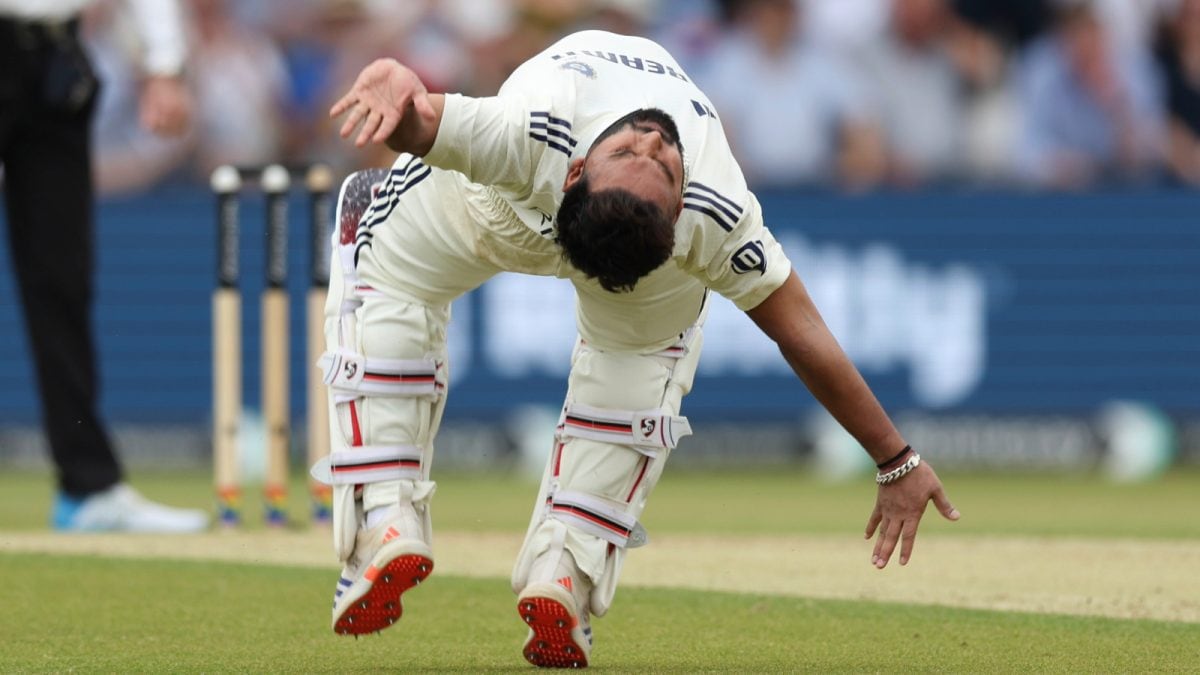It’s a washout: how Sydney’s Test cricket rain curse stops play and leaves Australian cities in its wake

Even if it doesn’t rain at the New Year’s Test this year, and the forecast a day before the first ball is promising, history suggests it would be safer to hold the match earlier in the cricket season. At least 26 full days of play have been rained out at the Sydney Test since the 1880s, according to ABC statistician Ric Finlay.That’s three times more lost days than in Melbourne, which has hosted more matches. And even a higher rate than subtropical Brisbane which was hit by storms during the third Test against India last month.Even when play in Sydney hasn’t been affected, there has been at least some rain on a third of the playing days in SCG Tests. Sydney is one of the rainiest Australian capitals, and January is one of its rainier months.View image in fullscreen Illustration: Josh Nicholas/The GuardianThere are some caveats to this; just over half of Test matches at the SCG have been played in January. The Sydney Test only started consistently being held in the new year in the early 90s, and it has been held in both October and November since then.There have been 23 Tests played in February (nine days rained out), and a couple as late as March (one day lost); these months are even wetter than January. Eight of the washouts were in December, but all of these were before 1955. Many of Sydney’s washouts were also before cricket rules were changed to cover pitches when it rained.It also rains a lot in Sydney even when it isn’t hard enough to write off a day of cricket. We looked at long term climate data from the closest weather station to each ground. There was some rain around on about a third of playing days in Sydney over the past 140 years – second only to Hobart.View image in fullscreen Illustration: Josh Nicholas/The GuardianNot all of this rain will actually impact games – the historic data only tells us if it rained within a 24-hour period, and rain may have hit the station and bypassed the ground.But analysis of ESPN scorecards shows rain-related delays, stoppages shifted breaks or early stumps on 31 separate days at the Sydney Test since the year 2000. Two of these Tests were played in October and only one of them was affected by rain – a late start due to rain overnight. There were just over 120 days of play in these Tests. More Sydney Tests were hit by rain than not, and six of the seven draws were in rain-affected games.We were unable to get playing times or more granular scorecards for matches before 2000. Despite seeing even more rain days, Hobart has only lost one complete day to rain across the 14 Test matches held there.One reason for all these delays is simply that Sydney is a rainy city. It has the highest average yearly rainfall of any of the major Test grounds in Australia.View image in fullscreen Illustration: Josh Nicholas/The GuardianSydney averages more than 1200mm of rain every year. This is more than double what Adelaide and Melbourne average and is even more than subtropical Brisbane.Dr Andrew King, a climate scientist from the University of Melbourne, notes this is at least partially due to how different weather systems affect these cities. “For Sydney, any kind of easterly wind will typically bring showers and rain,” says King.skip past newsletter promotion Sign up to The Spin Free weekly newsletter Subscribe to our cricket newsletter for our writers' thoughts on the biggest stories and a review of the week’s action Enter your email address Sign up Privacy Notice: Newsletters may contain info about charities, online ads, and content funded by outside parties. For more information see our Newsletters may contain info about charities, online ads, and content funded by outside parties. For more information see our Privacy Policy . We use Google reCaptcha to protect our website and the Google Privacy Policy and Terms of Service apply. after newsletter promotionBut it’s not just that Sydney is more rainy; it’s also more rainy in summer than winter, and January is one of the wettest months.“Between summer and winter we have movements of these weather systems” says King. “So in summer we tend to see the kind of fronts that affect Melbourne and Adelaide move a bit further south. So Melbourne tends to be a bit drier in summer than winter.”“Whereas Sydney is the other way round. Partly because Sydney gets a lot of its weather from thunderstorms and those thunderstorms are more likely to be more severe in summer.“Summers in Sydney are a bit wetter than winters. But it might not always feel like that because more of the rain is falling in thunderstorms and less in these long wet days. It may not be more time raining. It may just be heavier rain.”View image in fullscreen Illustration: Josh Nicholas/The GuardianKing says 140 years may not be enough time to see clear trends for noisy phenomena like rain. Where cricket is most obviously being affected by climate change is from extreme heat. But that doesn’t mean there aren’t inferences we can draw from 140 years of data.“One thing I’ve noticed is that you are more likely to have washout days in places like Brisbane and Sydney than you are in Melbourne or Adelaide. You’re more likely to have days in summer where it rains all day, basically.” says King.












